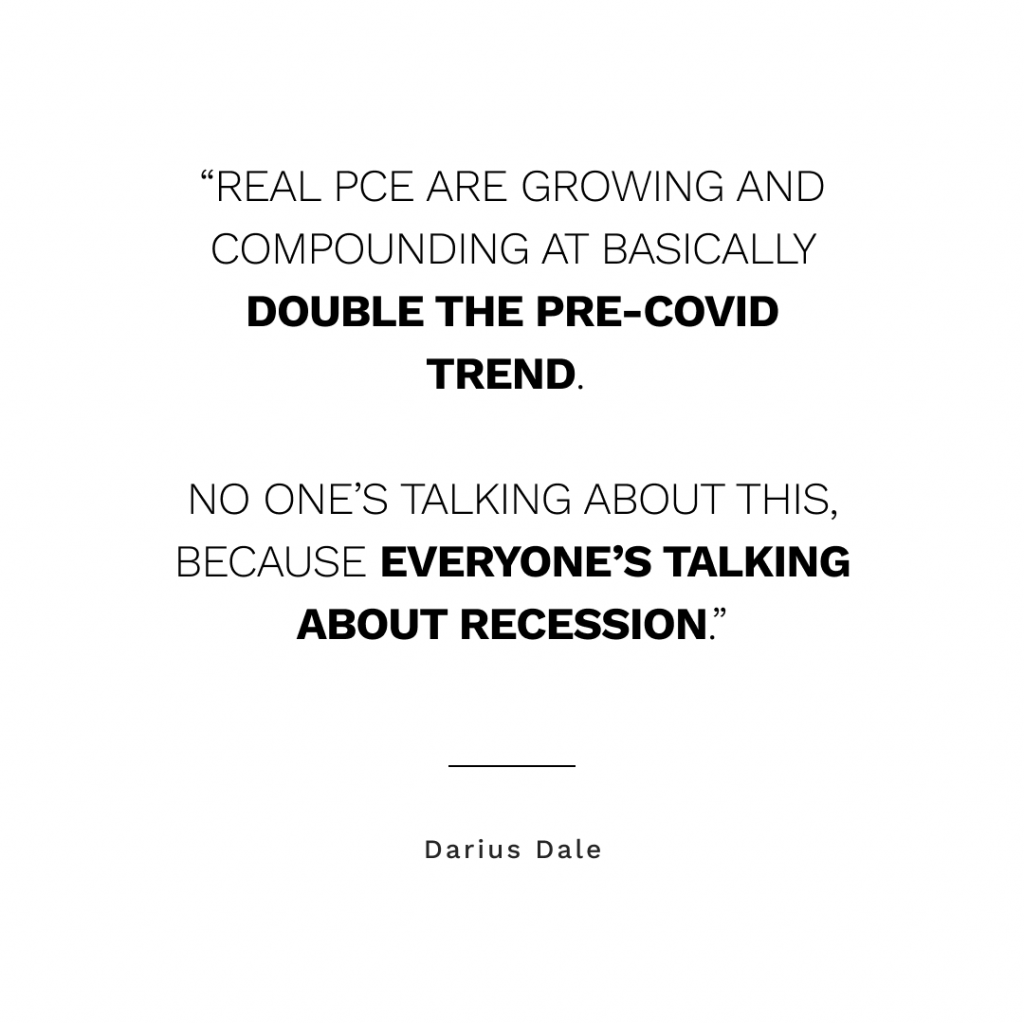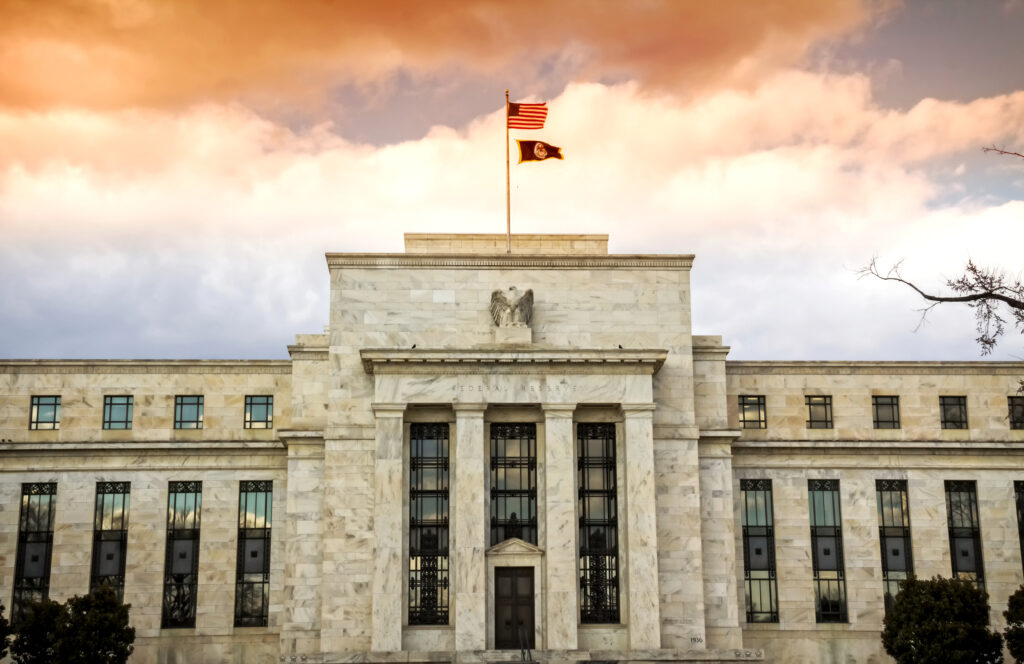1) The Bond markets are pricing in significant Federal Reserve easing in the coming 12-18 months.
In addition, the Fed Funds futures show easing is likely to start as early as November of this year.
But, our view on liquidity and factors in the real economy show that market positioning should change over the medium term.
As a result, we expect to see an increase in bond market volatility over the next quarter or two before we get into a recession.
2) The US consumer has been resilient.
Real PCE, which measures the value of goods and services purchased by households in the US, adjusted for inflation, is growing at twice its pre-covid trend.
Real Income is also growing at a three-month annualized rate of 7.6%.
The uptick in real PCE and Income signals increased demand for goods and services. This increase in demand can lead to higher prices, causing inflation to persist.
So, a resilient US consumer means sticky inflation.

3) The recession is likely to be delayed relative to investor consensus.
Many investors have been calling for a recession for over a year.
On top of that, many analysts are predicting negative GDP growth in the second quarter of the year.
But, our research shows the economy is resilient and will likely stay resilient until at least Q4.
And this delay could trap both bulls and bears, leading to significant volatility in both the stock and bond markets.
4) The AI bubble will eventually meet the wrong part of the Liquidity cycle.
The rise of AI is similar to the internet boom in the early 2000s. We could see a similar blow-off top in late-2023.
And while emerging technologies bring about significant societal changes, they don’t prevent market downturns. Investors would be wise to sell into strength later this year.
5) Is the bad news priced in? Are markets forward-looking?
We’ve backtested asset markets extensively and found that markets only look 2-3 months ahead at most.
Despite what people think, markets are more reactive than predictive.
And they’re most reactive to changing liquidity conditions. Since 2009, equity markets have been highly correlated to global liquidity.
Liquidity drives markets, and we believe the recovery in liquidity might not be as linear as many investors believe.
6) We expect a negative liquidity backdrop over the next few months.
We’ve probably seen a medium-term high in liquidity.
The expected increase in the Treasury General Account and the return to net coupon issuance by the US Treasury are negative for liquidity.
As a result, the Dollar could trend higher in the near term, harming #Bitcoin and other risk assets.
That’s a wrap!
If you found this article helpful, go to https://42macro.com/macro-bundle to unlock actionable, hedge-fund caliber investment insights.
Have a great day


